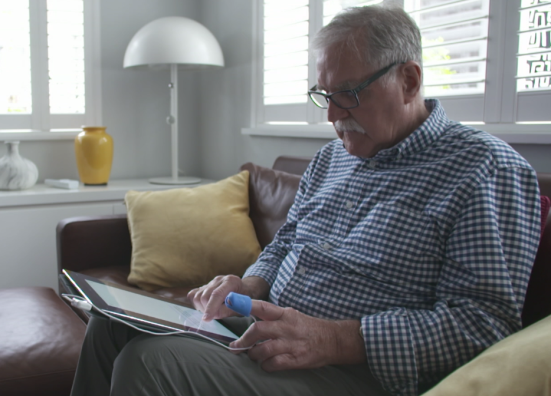By Claire Forbes
ithlete users know the value of tracking changes in their heart rate variability (HRV) over time to optimise recovery and athletic performance. But what benefits could tracking HRV have for a clinical population?
In 2018, HRV Fit Ltd (the company behind ithlete) secured funding from Innovate UK, in collaboration with Bournemouth University, to investigate this question. The project aims to investigate the use of HRV as part of an approach to help people with a condition called Chronic Heart Failure (CHF).
This project is part of a ‘Knowledge Transfer Partnership’ bringing together the knowledge and expertise from both HRV Fit Ltd and the University.
What is Chronic Heart Failure?
 Chronic Heart Failure (CHF) does not mean that the heart has failed, but that ‘the heart is unable to pump blood around the body properly’ (NHS, 2018). Although CHF is a long term condition; some people with CHF can experience short-term worsening of the signs and symptoms of the condition, known as ‘Acute Decompensated Heart Failure’ (ADHF). ADHF can lead to unplanned hospital admissions and can have a substantial impact on people with CHF, as well as representing a large burden on the NHS.
Chronic Heart Failure (CHF) does not mean that the heart has failed, but that ‘the heart is unable to pump blood around the body properly’ (NHS, 2018). Although CHF is a long term condition; some people with CHF can experience short-term worsening of the signs and symptoms of the condition, known as ‘Acute Decompensated Heart Failure’ (ADHF). ADHF can lead to unplanned hospital admissions and can have a substantial impact on people with CHF, as well as representing a large burden on the NHS.
Early identification of any changes in the condition is important to allow medical, or other, intervention to prevent ADHF from occurring.
What does the research say?
Many studies have investigated which biological information, including HRV, can be monitored remotely to help prevent ADHF (see review by Dickinson 2018 for further information). Approaches range from direct monitoring of biological variables using implanted devices (devices that are surgically fitted inside the body), to ‘telemonitoring’ approaches, such as structured telephone support programmes. European Guidelines recommend that monitoring using implanted devices (which have been successful in clinical trials) may be considered for certain people with CHF (Ponikowski 2016), however no single telemonitoring approach is currently recommended.
The question remains if an ‘in-between’ approach, without the need for an invasive device, may be effective in helping people with CHF, and their care team, to monitor their condition.
Find out more about CHF on the NHS website or the British Heart Foundation website.
References
Dickinson, M.G., Allen, L.A., Albert, N.A. … Givertz, M.M., 2018. Remote monitoring of patients with heart failure: a white paper from the Heart Failure Society of America scientific statements committee. Journal of cardiac failure, 24(10), pp.682-694.
Ponikowski, P., Voors, A.A., Anker, S.D. … Jessup, M., 2016. 2016 ESC Guidelines for the diagnosis and treatment of acute and chronic heart failure: The Task Force for the diagnosis and treatment of acute and chronic heart failure of the European Society of Cardiology (ESC). Developed with the special contribution of the Heart Failure Association (HFA) of the ESC. European journal of heart failure, 18(8), pp.891-975.
